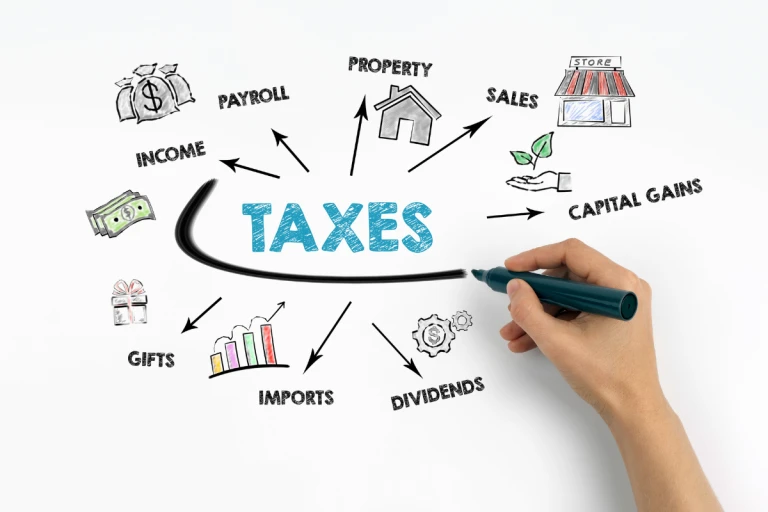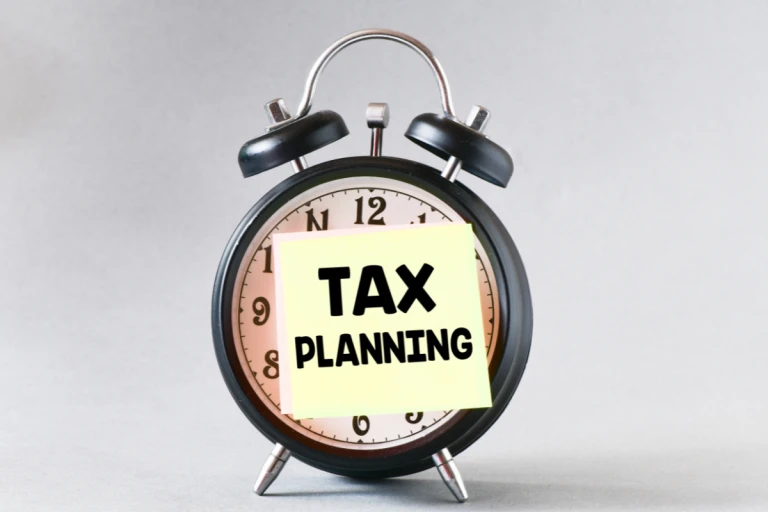Old vs New tax regime: Which one is better for you?
Imagine you, the taxpayer, standing at a crossroads, trying to decide between the old and familiar tax rules or the trendy new ones. Let me break it down for you: The government in India changed the tax game on April 1, 2020, giving you a choice between the usual and the new, exciting tax options. Now, in 2023, the new way is the default choice, but there's a twist! The government made the new rules more appealing, offering more exemptions and surprises.

New Tax Regime Table 2023-24
Net Annual Income Range | New Regime Tax Rate |
INR 0 to INR 3 lakh | Nil |
INR 3 lakh to INR 6 lakh | 5% |
INR 6 lakh to INR 9 lakh | 10% |
INR 9 lakh to INR 12 lakh | 15% |
INR 12 lakh to INR 15 lakh | 20% |
Above INR 15 lakh | 30% |
Features of New Tax Regime
Below listed are the key features of the new tax regime:
Lower Tax Rates:
The new tax system has six different rates, starting from 0% and going up to 30% for income above INR 15 lakh. In comparison, the old system had five rates, starting from INR 3 lakh, with the maximum rate being 30% for income above INR 10 lakh.
Default Option:
Now, the new tax system is the default choice for taxpayers. If you want to stick to the old system, you have to specifically choose it.
Standard Deduction:
For those under the new tax system, there's a standard deduction of INR 50,000 for salaried employees. This means, no matter your income, you subtract INR 50,000 before calculating taxable income. Family pension standard deduction has increased to INR 15,000 or 1/3rd of the pension, whichever is lower.
Tax Rebate:
People earning up to INR 7 lakh now get a tax rebate, previously set at INR 5 lakh under Section 87A.
Higher Leave Encashment Exemption:
Non-government employees now enjoy a higher exemption limit for leave encashment, increased from INR 3 lakh to INR 25 lakh.
Surcharge Reduction for HNIs:
High Net-worth Individuals (HNIs) see a reduction in surcharge rates, from 37% to 25%, for income exceeding INR 5 crore. This lowers the effective rate from 42.74% to 39%.
Applicable Tax Rates:
Individuals earning up to INR 7 lakh annually are entitled to a rebate.
Super Rich Tax Cut: Highest surcharge rate on income above INR 5 crore reduced from 37% to 25% in the new tax system.
Old Tax Regime Vs New Tax Regime
Income Tax Slab | Old Tax Regime | New Tax Regime |
NIL | INR 0 to INR 2.5 lakh | INR 0 to INR 3 lakh |
5% | INR 2.5 lakh to INR 5 lakh | INR 3 lakh to INR 6 lakh |
10% | INR 5 lakh to INR 7.5 lakh | INR 6 lakh to INR 9 lakh |
15% | INR lakh to INR 10 lakh | INR 9 lakh to INR 12 lakh |
20% | INR 10 lakh to INR 12.5 lakh | INR 12 lakh to INR 15 lakh |
25% | INR 12.5 lakh to INR 15 lakh | – |
30% | Above INR 15 lakhs | Above INR 15 lakh |
List of Deductions and Exemptions Under The Old Tax Regime
Particulars | New Tax Regime (From 1st April 2023) |
Income level for rebate eligibility | INR 5 lakhs |
Standard Deduction | INR 50,000 |
Effective Tax-Free Salary income | INR 5.5 lakhs |
Rebate u/s 87A | INR 12,500 |
HRA Exemption | ✓ |
Leave Travel Allowance (LTA) | ✓ |
Other allowances including food allowance of Rs 50/meal subject to 2 meals a day | ✓ |
Standard Deduction (INR 50,000) | ✓ |
Entertainment Allowance and Professional Tax | ✓ |
Perquisites for official purposes | ✓ |
Interest on Home Loan u/s 24b on: Self-occupied or vacant property | ✓ |
Interest on Home Loan u/s 24b on: Let-out property | ✓ |
Deduction u/s 80C (EPF | LIC | ELSS | PPF | FD | Children's tuition fee etc) | ✓ |
Employee's (own) contribution to NPS | ✓ |
Employer's contribution to NPS | ✓ |
Medical insurance premium - 80D | ✓ |
Disabled Individual - 80U | ✓ |
Interest on education loan - 80E | ✓ |
Interest on Electric vehicle loan - 80EEB | ✓ |
Donation to Political party/trust etc - 80G | ✓ |
Savings Bank Interest u/s 80TTA and 80TTB | ✓ |
Other Chapter VI-A deductions | ✓ |
All contributions to Agniveer Corpus Fund - 80CCH | ✓ |
Deduction on Family Pension Income | ✓ |
Gifts Up to INR 50,000 | ✓ |
Exemption on voluntary retirement 10(10C) | ✓ |
Exemption on gratuity u/s 10(10) | ✓ |
Exemption on Leave encashment u/s 10(10AA) | ✓ |
Daily Allowance | ✓ |
Conveyance Allowance | ✓ |
Transport Allowance for a specially-abled person | ✓ |

List of Deductions and Exemptions Under The New Tax Regime
Particulars | New Tax Regime (From 1st April 2023) |
Income level for rebate eligibility | INR 7 lakhs |
Standard Deduction | INR 50,000 |
Effective Tax-Free Salary income | INR 7.5 lakhs |
Rebate u/s 87A | INR 25,000 |
Standard Deduction (INR 50,000) | ✓ |
Perquisites for official purposes | ✓ |
Interest on Home Loan u/s 24b on: Let-out property | ✓ |
Employer's contribution to NPS | ✓ |
All contributions to Agniveer Corpus Fund - 80CCH | ✓ |
Deduction on Family Pension Income | ✓ |
Gifts Up to INR 50,000 | ✓ |
Exemption on voluntary retirement 10(10C) | ✓ |
Exemption on gratuity u/s 10(10) | ✓ |
Exemption on Leave encashment u/s 10(10AA) | ✓ |
Daily Allowance | ✓ |
Conveyance Allowance | ✓ |
Transport Allowance for a specially-abled person | ✓ |
Trade-offs in New Regime
When opting for the new tax system, the government wants to make things simpler for both taxpayers and tax authorities. To achieve this, certain exemptions and deductions under the current tax laws need to be let go. This means saying goodbye to benefits like Leave Travel Allowance (LTA), House Rent Allowance (HRA), Children Education Allowance, Professional Tax Deduction, Interest on Housing Loan, and various deductions under Chapter VI-A. These include commonly known deductions like those for contributions to public provident funds, repayment of housing loan principal, children's school fees, life insurance premiums, as well as other deductions for medical insurance premiums and interest on education loans. It's like trading off some of these perks for the ease of lower tax rates in the new system.
Which Tax System Suits You?
Under the new tax rules, someone earning INR 9 lakh a year would pay INR 45,000 in taxes, which is 5% of their income. This is a reduction of INR 15,000 from the earlier tax slabs, making it more affordable. Even for someone with INR 15 lakh income, the tax drops from INR 1.87 lakh to INR 1.5 lakh under the new regime.
But here's the twist: If you're eligible for deductions under the old system—like for House Rent Allowance (HRA), Leave Travel Allowance (LTA), Public Provident Fund (PPF), and more—it might be more advantageous. Since everyone's deductions, income sources, and amounts differ, there's no one-size-fits-all rule.
If you've got investments, pay life or medical insurance premiums, children's school fees, or are repaying a home loan under the old system, it might be better for you. The old system allows these deductions/exemptions.
The new system does offer a standard deduction of INR 50,000 for salaried folks and a family pension deduction, whichever is lower—either INR 15,000 or 1/3rd of the pension. So, it's a bit of a balancing act to figure out which system suits your financial scenario best.
Also read: SEC has Officially Approved all 11 Spot Bitcoin ETFs
The Bottom Line
It's like planning your route on a map—you want to save money and make the journey smooth. So, do a bit of tax planning, figure out your financial GPS, and let's make that money-saving, stress-free journey!
Follow us on Instagram.









